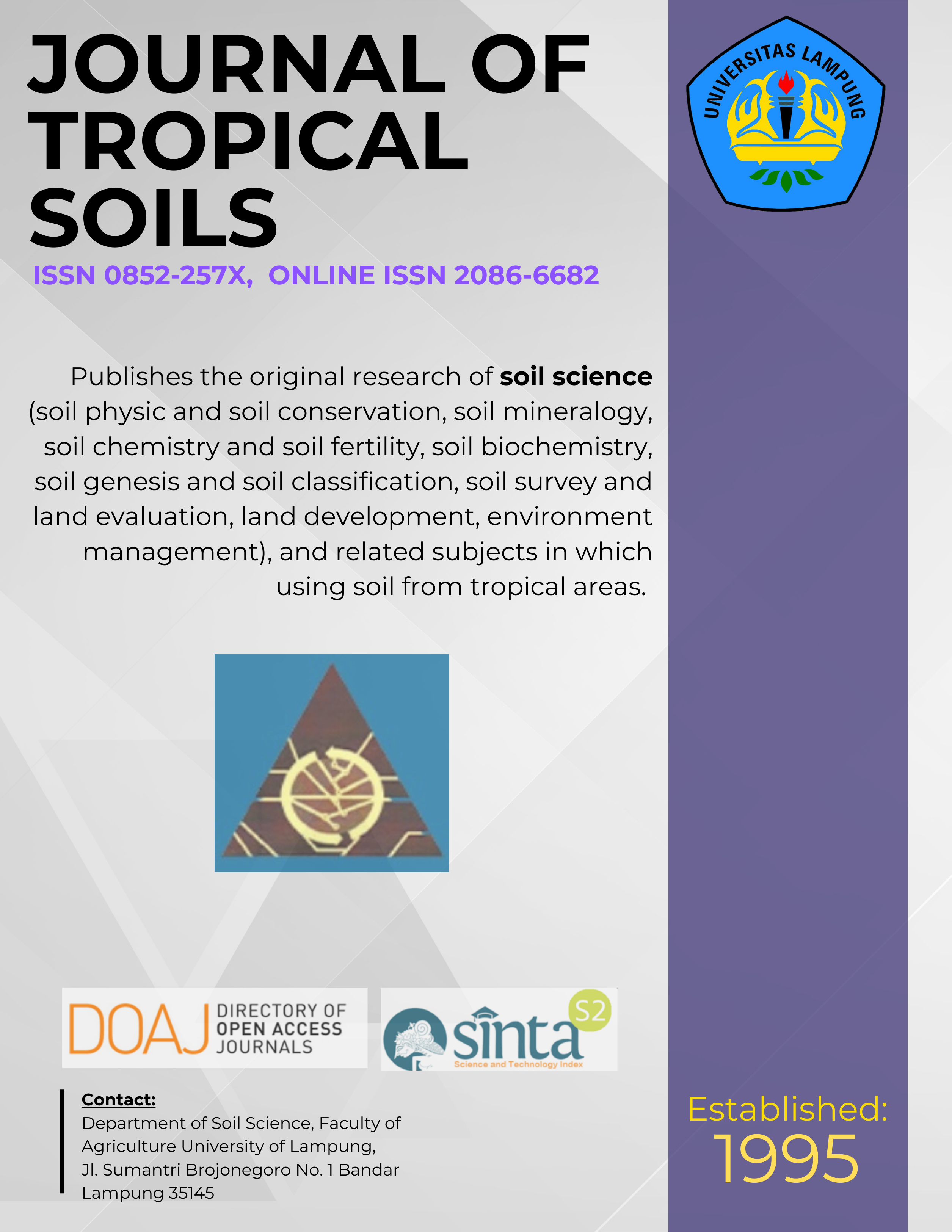Application of Lime and Adaptable Variety to Increase Tomato Productivity at Potential Acid Sulphate Soil
Main Article Content
Abstract
High soil acidity is the most important problem that causes low tomato (Lycopersicum esculentum) productivityat potential acid sulphate soil. Soil quality improvement by using ameliorant, such as lime, and introducing adaptable variety are options to increase tomato productivity in the soils. Field experiment was conducted to evaluate the effect of lime and varieties of tomatoes to increase its productivity in a potential acid sulphate soil of Belandean, Barito Kuala District, South Kalimantan during dry season of 2011. The research was arranged in a split-plot design with three replicates. The main plots were two tomatoes varieties, i.e. Permata and Ratna, while sub plots were five levels of lime, i.e: 0, 0.5, 1.0, 1.5, and 2.0 t ha-1. The results showed that liming improved soil quality and tomato yield. It significantly increased soil pH and reduced soil Al-saturation, and increased soil exchangeable-Ca and Mg. It was assumed that due to pyrite oxidation, however, soil pH decreased and Al-saturation increased, while soil exchangeable- Ca and Mg decreased significantly at nine weeks after planting. Liming also increased plant growth and yield variables (plant height, size, number and weight of fruit, and fruit yield) for both varieties. The better variables of Permata variety at control treatment than those of Ratna variety indicated that the first variety was more adaptive than the other variety in potential acid sulphate soil.
Keywords: Adaptable variety, lime, potential acid sulphate soil, tomato.
[How to Cite: Koesrini, E William and D Nursyamsi. 2014. Application of Lime and Adaptable Variety to Increase Tomato Productivity at Potential Acid Sulphate Soil. J Trop Soils 19(2): 69-76. Doi: 10.5400/jts.2014.19.2.69]
Â
Â
Â
Downloads
Article Details
Issue
Section
License for Authors
Authors who publish with this journal agree to the following terms:
- Authors retain copyright and grant the journal right of first publication with the work simultaneously licensed under a Creative Commons Attribution License that allows others to share the work with an acknowledgement of the work's authorship and initial publication in this journal.
- Authors are able to enter into separate, additional contractual arrangements for the non-exclusive distribution of the journal's published version of the work (e.g., post it to an institutional repository or publish it in a book), with an acknowledgement of its initial publication in this journal.
- Authors are permitted and encouraged to post their work online (e.g., in institutional repositories or on their website) prior to and during the submission process, as it can lead to productive exchanges, as well as earlier and greater citation of published work (See The Effect of Open Access).
License for Regular Users
Other regular users who want to cite, distribute, remix, tweak, and build upon author’s works, even for commercial purposes, should acknowledge the work’s authorship and initial publication in this journal, licensed under a Creative Commons Attribution License.

